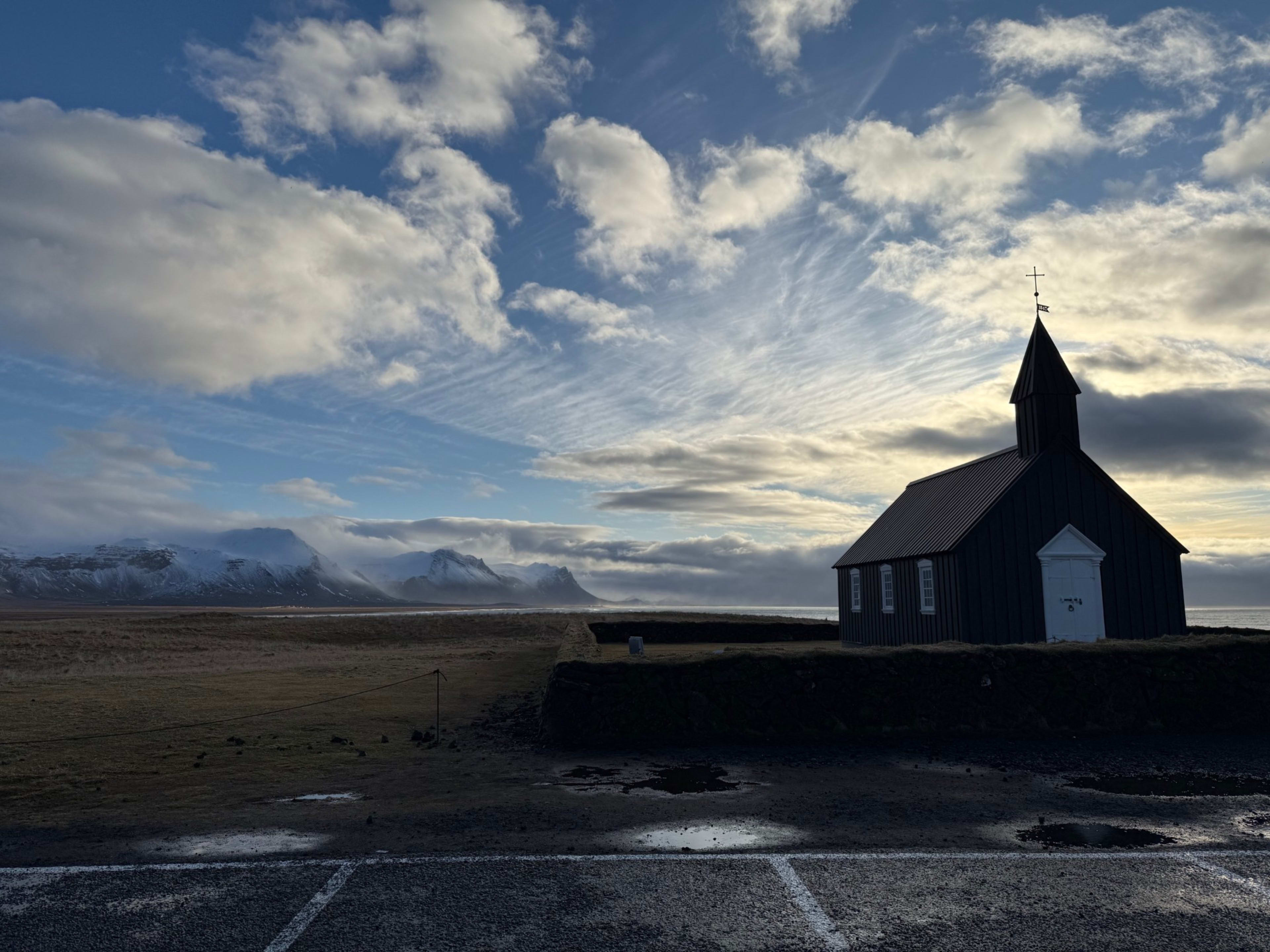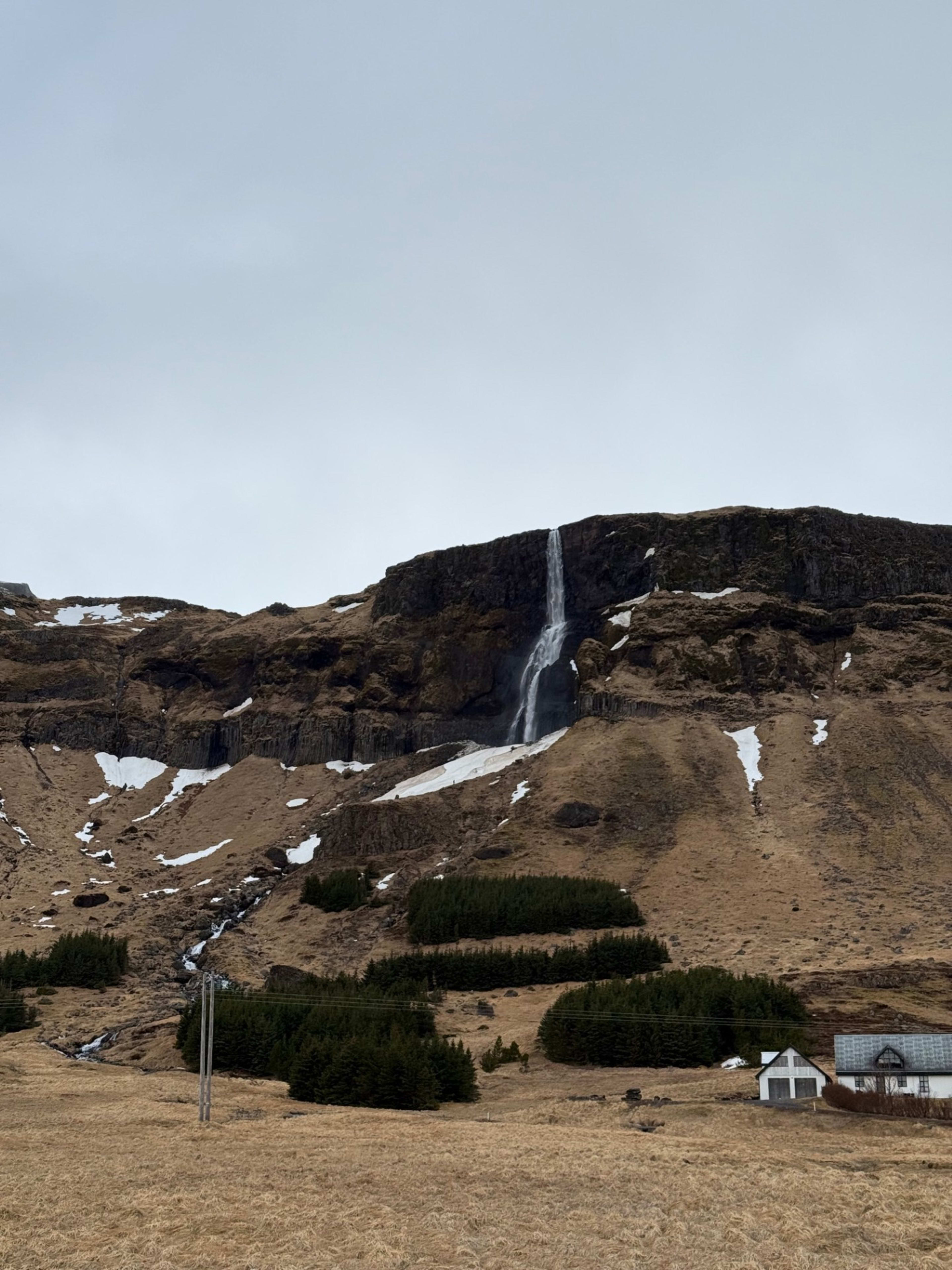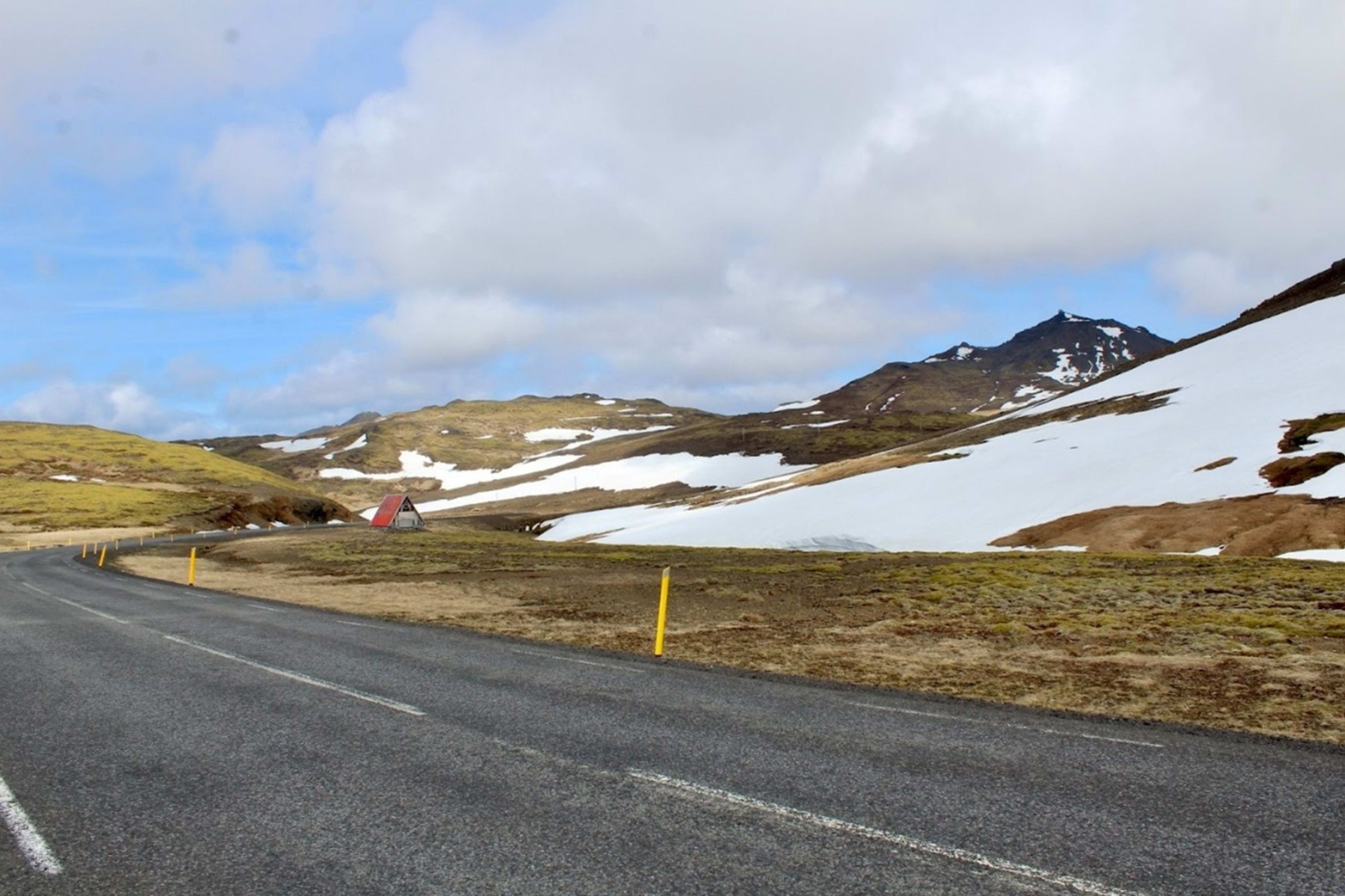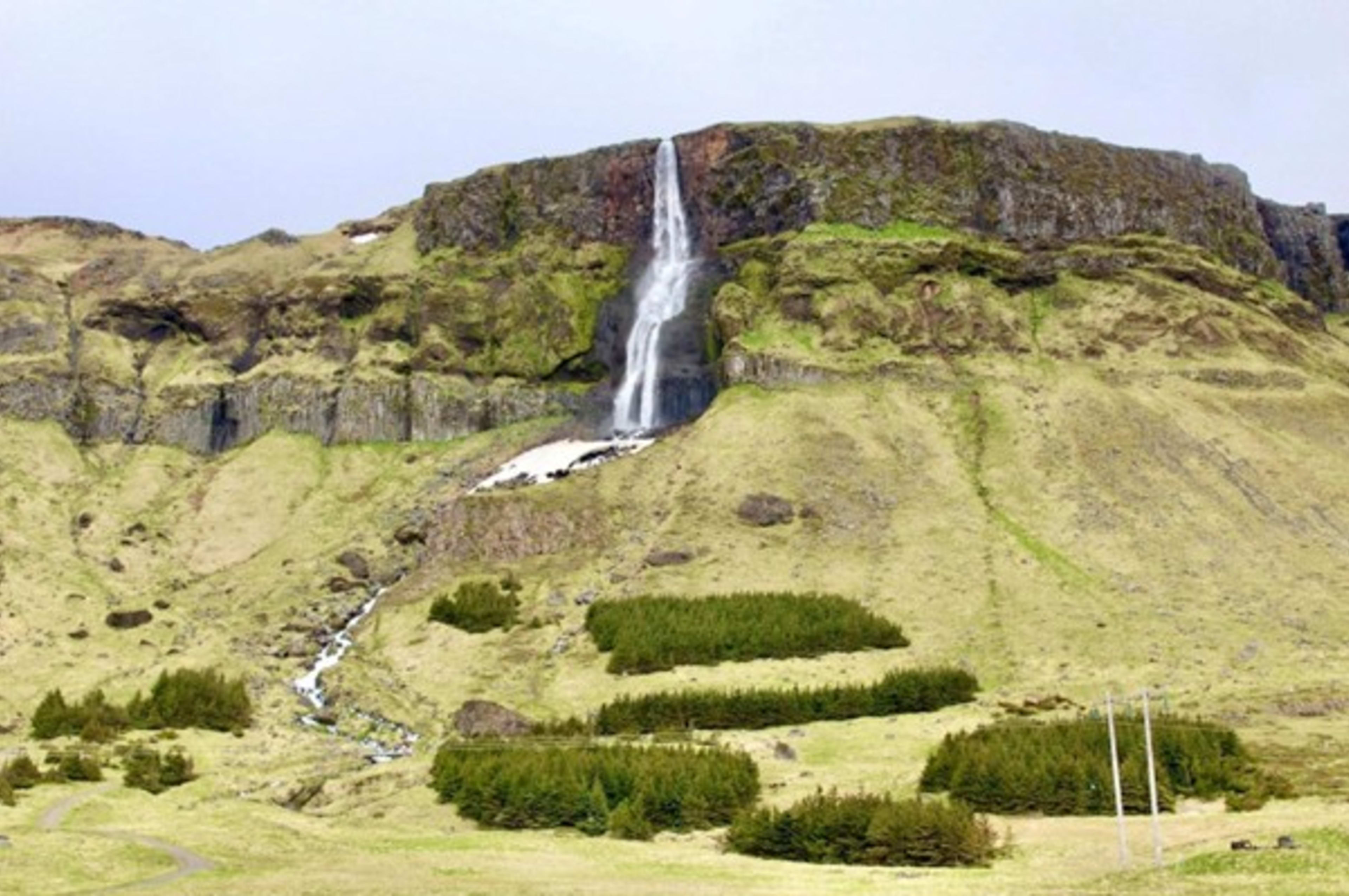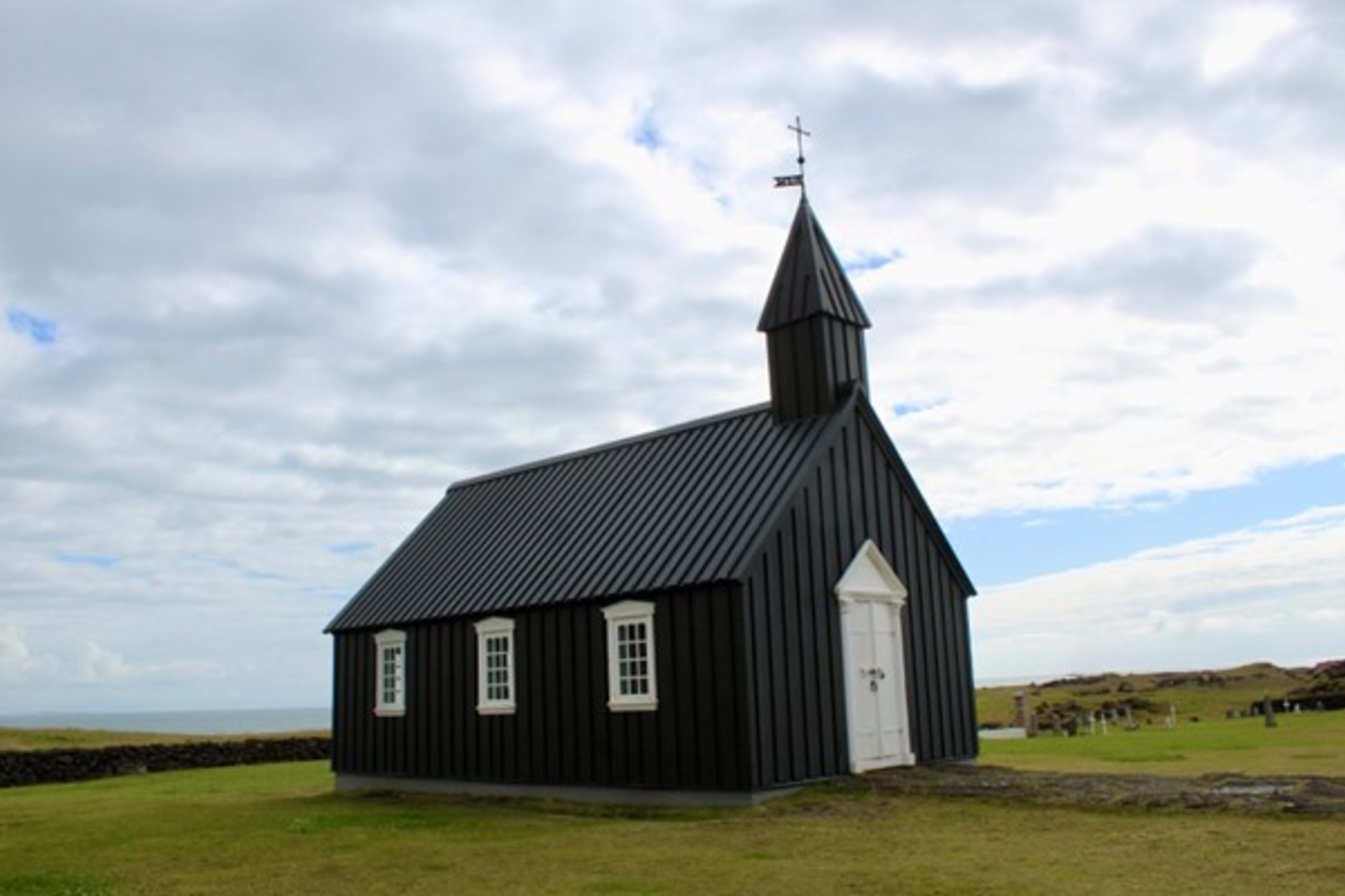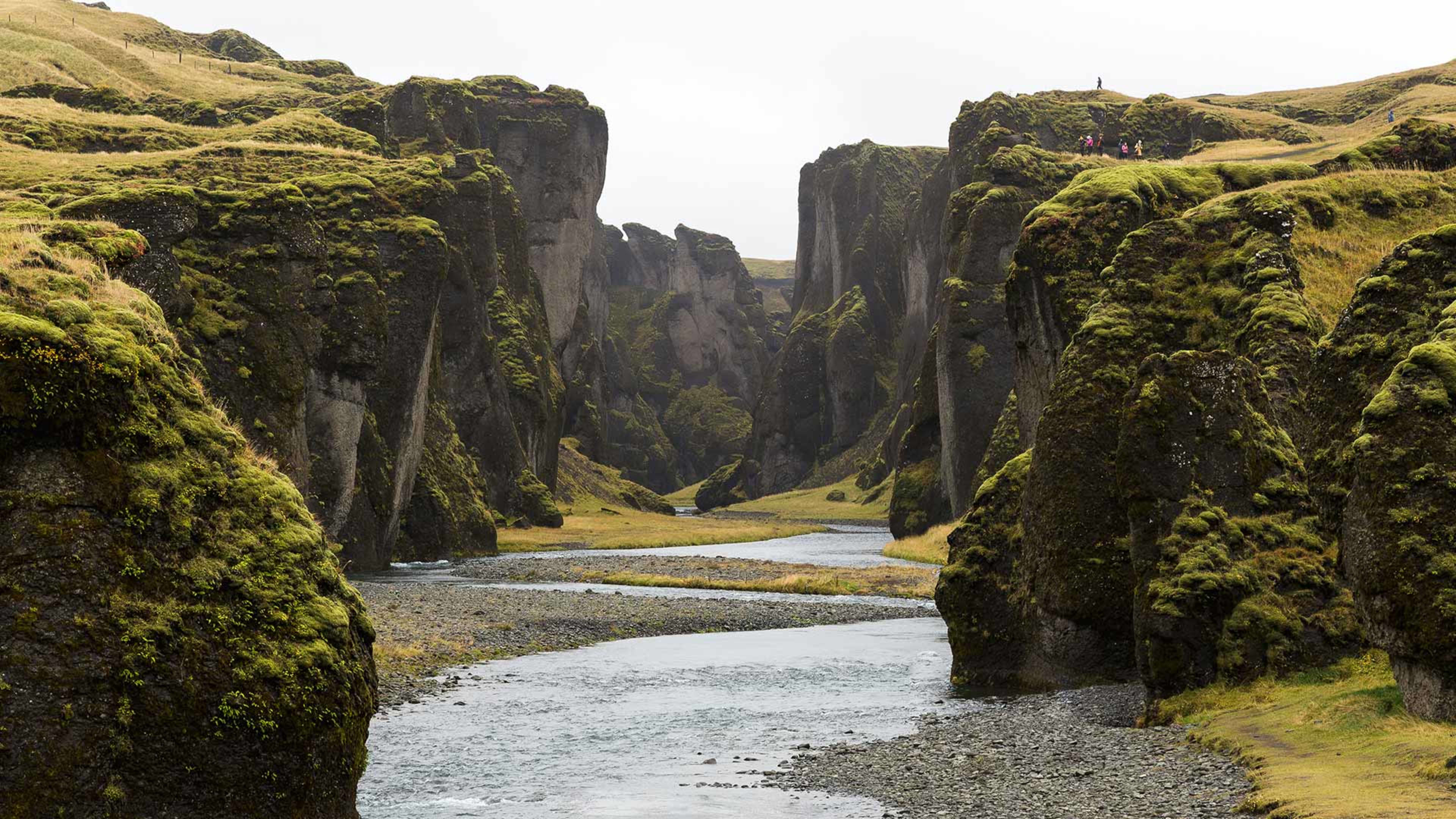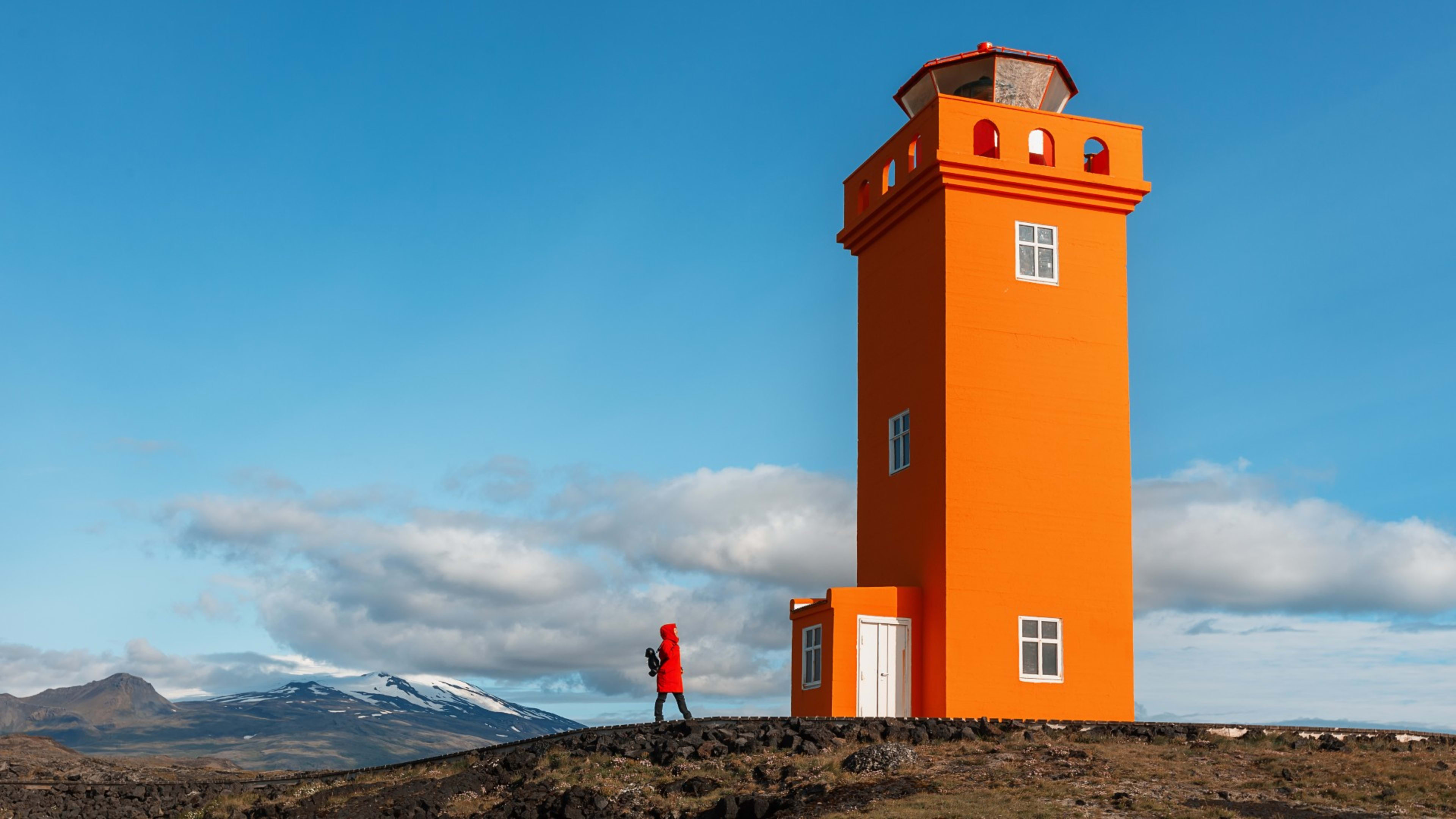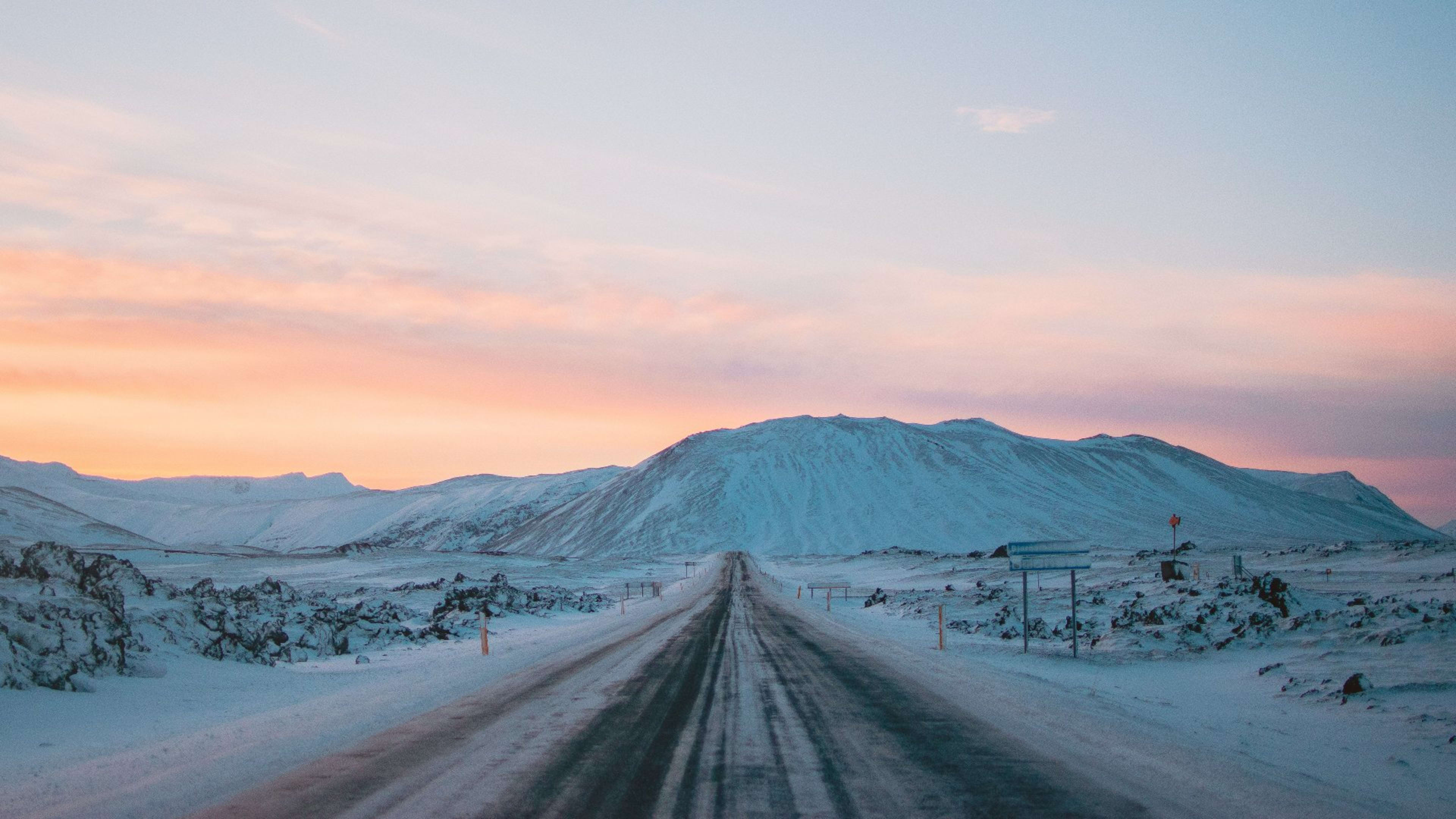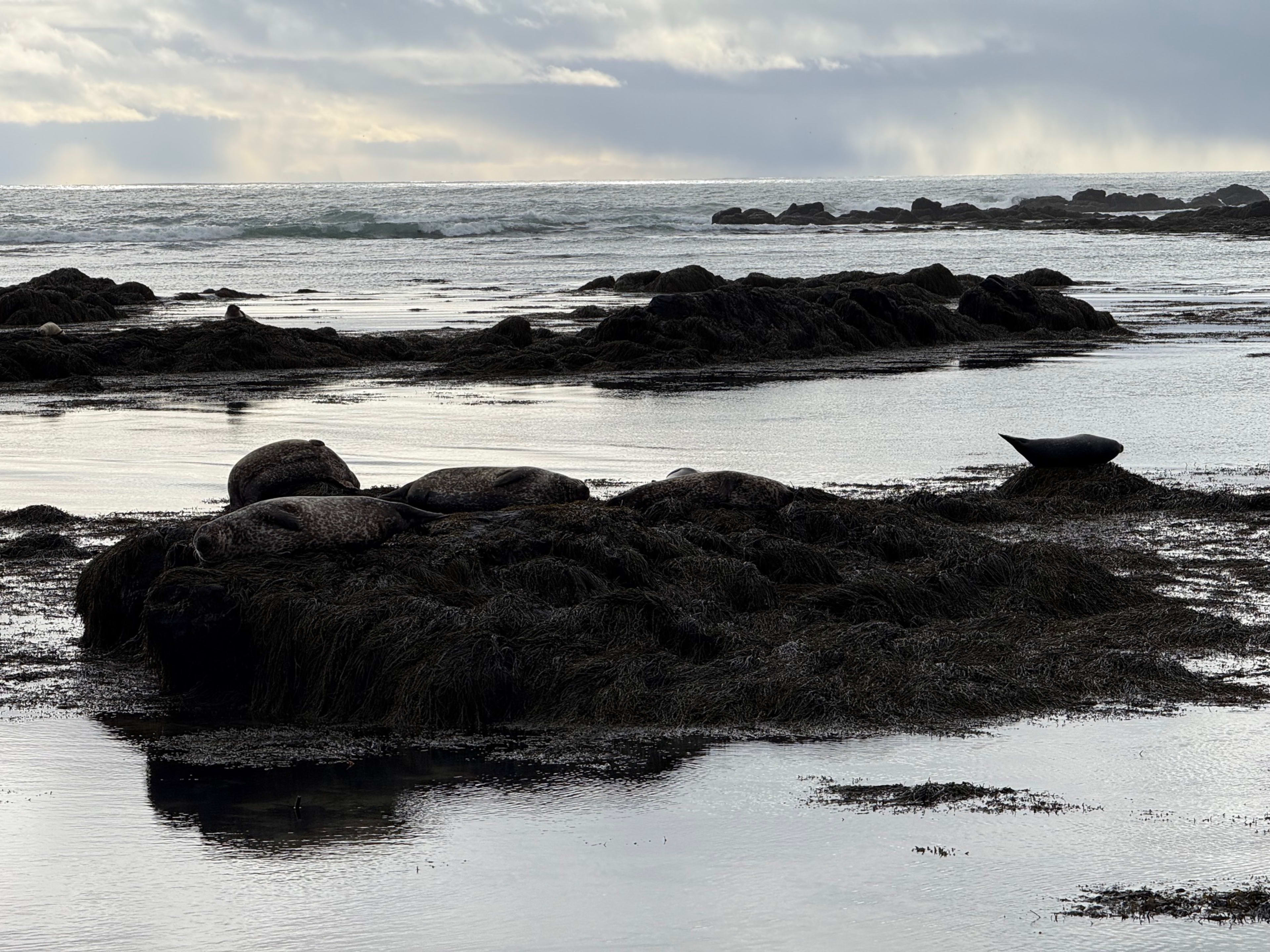Your Complete Guide to Búðir
Where is Búðir?
Búðir is a tiny settlement tucked away on the southern shores of Snæfellsnes, easily reached on fully paved roads all the way from Reykjavík.
Take Route 1 north from the capital for 75 kilometers and then, just outside Borgarnes, turn west on Route 54 and drive for another 100 kilometers.
At that point, you’ll see a beautiful waterfall on your right, called Bjarnarfoss, and this is close to where the road splits in two directions.
Bjarnarfoss is well worth a closer look before you make your way to Búðir.
A path from the free parking area leads up to the falls, which cascade gracefully from 80 meters high over marvelous basalt columns.
The story goes that a wealthy farmer named Bjarni lived nearby, so the waterfall was named after him — Bjarnarfoss.
Local folklore also mentions the Fjallkonan (Lady of the Mountain), who is said to stand under the waterfall with the spray falling on her shoulders.
The Lady of the Mountain is an iconic figure in Iceland, depicted with a crown of ice from which flames erupt, accompanied by the raven, Iceland’s most revered bird, against a backdrop of mountains and moonlight.
Since Iceland declared its independence in 1944, the Fjallkonan has become the focal point of the annual independence celebrations.
Held on June 17th each year, a famous actress wearing skautbúningur (the national costume) will read a poem to huge crowds.
Taking Route 54 just west of here will lead you inland and uphill on the mountain pass over Fróðárheiði, skirting the edge of the towering stratovolcano that gives this peninsula its name.
Did you know that Snæfellsjökull translates as “Snow Mountain Glacier”? And Snæfellsnes means “Snow Mountain Peninsula”.
Following Route 54 over the mountain will also bring you to the northern coast of the peninsula and popular sights like Kirkjufell more quickly, and it offers extraordinary views back towards the capital.
But it’s also a challenging option, often snowbound, icy, and difficult to drive. That’s why many visitors to Snæfellsnes take Route 574 instead.
This is the spectacular coastal road that runs around the peninsula, much easier to drive and lined with stunning sights along the way.
Búðir is the first attraction you’ll find when you head west on Route 574.
Less than a kilometer from the Route 54 / 574 junction, a turnoff leads onto the two-kilometer coastal road to its iconic church and a charming country hotel.
What’s Búðir’s history?
One of the more historically significant areas of Snæfellsbær in Vesturland, the Western region of Iceland, Búðir is filled with fascinating treasures.
References in the Eyrbyggja Saga to Hraunhafnarós and Búðaós suggest that these were important commercial centers in Iceland’s early history, dating back to the Settlement era in the 9th century.
Búðir was once the busiest trading post on the south coast, and in 1703, more than 100 people lived here, making it a sizable settlement in Iceland at the time.
The name translates as “booths” or “huts”, reflecting its early association with trading posts and fishing huts (verbúðir).
Búðir’s coastal location and convenient landing spots in between the lava flows made it a thriving commercial hub for centuries.
The trading post was moved across the estuary in the 17th century and stayed there for 130 years until a massive winter storm hit the peninsula in January 1799.
The resulting storm surge almost washed the village and the surrounding region of Staðarsveit away, leading to the relocation of the trading post back over to the west of the estuary.
During the Danish trade monopoly in the 18th and 19th centuries, Búðir reached its peak, only to slowly fade into disrepair and eventual abandonment as shifting commercial patterns and changing weather conditions took hold.
A walking trail southwest of Búðir leads you to Frambúðir, where the fishermen’s huts and fish drying walls once stood.
Búðarkirkja
Iceland is blessed with many beautiful churches, and Búðakirkja is one of the finest.
Simple, straightforward, and yet stunningly photogenic, Búðarkirkja stands proud against the backdrop of Snæfellsjökull and the lava fields, quietly calm and peaceful.
Búðarkirkja was first erected in 1703 by Bendt Lauridsen, a local merchant in Búðir. Over time, it fell into disrepair and was eventually deconsecrated in 1816.
Steinunn Sveinsdóttir, a merchant’s widow who lived here in the 19th century, declared her intention to rebuild the church in 1847.
Legend has it that she did this after Bendt Lauridsen requested it of her in a dream!
She had been looking after the old church’s artifacts for some time, and she led the campaign to raise funds for a new church here, despite opposition and indifference from national church officials.
Finally, Steinunn appealed directly to the King of Iceland and Denmark, and the present church was raised a year later.
The church door ring tells the story, as it is engraved with the words: “The church was rebuilt in 1848, with no support from the spiritual leaders.”
This is a fine example of Icelandic attitudes to authority, which are often quite resistant!
The new church was consecrated in 1851, and Steinunn died three years later, at the age of 77. She is buried in the cemetery, and you can see her memorial gravestone.
In 1984, the church was moved from the old graveyard to its current spot, renovated and reconsecrated in 1987.
Although it’s a simple church without heating, running water, or a restroom, it’s become increasingly popular as a venue for social gatherings and cultural events.
There’s space for about 50 visitors, and in addition to church services, the black-timber church has become famous as a wedding venue.
Couples from all over the world choose it for their celebrations because of its fabulous location.
The GPS coordinates for Búðakirkja are 64.8217° N, 23.3840° W.
The Búðahraun lava field
West of Búðir and along the coast lies the Búðahraun lava field, where lava last flowed from the volcanic crater, Búðaklettur, around five thousand years ago.
These ancient lava fields are now home to more than 100 species of mosses, flowers, and heather, and Búðahraun was designated a protected nature reserve in 1977.
Hiking trails around Búðahraun offer stunning views of jet-black lava flows, including the Búðaklettur crater, grassy mounds, and golden sand beaches.
Peaking at nearly ninety meters high, there’s a 382-meter-long cave on the crater’s southwestern side, called Búðahellir.
The “Búðir‑Frambúðir‑Búðaklettur” walk is relatively easy, taking around 1–2 hours on gravel, lava, and grass, and including the historic sites and the nature reserve.
Exploring here gives you a flavor of early Icelandic life, carved out on a small sliver of livable land between the volcanoes, glaciers, and mountains inland, and the wild Atlantic waves raging out at sea.
Búðahraun has a special place in Icelandic folklore as well!
On a nearby farm, Iceland’s sole recorded serial killer, Axlar-Björn, made a habit of killing innocent travelers who passed through his lands, keeping their horses and property.
Suspected of murdering as many as 18 victims and hiding their bodies in the Iglutjörn pond here, he was finally caught and executed for his crimes in 1596.
What to see and do near Búðir
Once you return to Route 574, heading west will take you north of Búðahraun to Breiðavík, another idyllic bay for strolling beachcombers.
And between Búðir and Ytri Tunga, you might want to try out one of Iceland’s more unusual geothermal hot pots.
Lýsulaugar (open June to August) is a gorgeous geothermally heated hot pot rich in green algae and minerals, which can have a soothing and healing effect on the body.
There’s a swimming pool and hot and cold tubs where you can relax while enjoying astonishing views of the Snæfellsjökull glacier in the distance.
Lýsulaugar is located on the north side of Route 54, 8.5 kilometers west of Ytri Tunga, or 13 kilometers east of Búðir. It’s open from 1100 to 2100 in the summer.
Just west of Lýsuhóll, Route 54 also passes Búðavík, a vast bay with fabulous views and more hiking trails.
Other attractions nearby
- The moss-covered Rauðfeldsgjá gorge (15 kilometers)
- The seal-spotting beach at Ytri Tunga (20 kilometers)
- Gatklettur, the gorgeous stone arch at Arnarstapi (20 kilometers)
- The towering bird-filled cliffs at Lóndrangar (25 kilometers)
- The polished black “pearls” of Djúpalónssandur beach (33 kilometers)
What services and amenities are available at Búðir?
Hotel Búðir is an ideal place to stay overnight if you want to explore this area more deeply.
Constructed as a summer guesthouse and restaurant in 1947 and welcoming its first guests in 1948, it was rebuilt after a 2001 fire and reopened in 2003.
The popularity of Búðir as a Snæfellsnes sightseeing stop has led to its expansion, with nearly 50 rooms now available for overnight accommodation.
The highly rated restaurant focuses on local ingredients such as lamb and fish, served with fresh vegetables and selected wines.
With outstanding ocean views and full of character, it’s an ideal location to soak up the splendor of Snæfellsnes.
Where to stay near Búðir
As well as Hotel Búðir, there are several campsites within range of here.
- Langaholt campsite: open from May to September (15 kilometers)
- Arnarstapi campsite: open from May to September (19 kilometers)
- Ólafsvík campsite: open from June to August (21 kilometers)
- Hellissandur campsite: open from May to September (32 kilometers)
- Grundarfjörður campsite: open year-round (37 kilometers)
Staying safe during your visit
While Búðir is usually quiet and peaceful, you’re still exposed to Iceland’s unpredictable and fast-changing weather, so you’ll need to prepare appropriately for a visit here.
Wear waterproof and windproof clothing with light layers underneath, including a warm wool or fleece layer. There can be a lot of sea spray on the hiking trails!
Make sure your shoes are sturdy and waterproof, particularly if you’re keen on exploring the hiking trails here. Good ankle support is wise, given the uneven terrain.
Remember to always stay on marked trails and respect the fragile natural environment—leave no trace!
Always let someone know your travel plans, or register your schedule with SafeTravel.is.
Why you should add Búðir to your itinerary
Although Búðir today is still very small, with its iconic black-timber church and a country hotel as its main attractions, there’s so much more to discover here.
Exploring its walking paths will paint a picture of how life was lived on the edge here, with people battling the elements and carving out a community against the odds.
Taking some time to delve deeper offers a genuinely intriguing snapshot of earlier times in Icelandic history, when fishing and trade brought prosperity to this part of Iceland.
While Búðakirkja and Hotel Búðir have helped to put Búðir on the map again, it’s the sense of history, the raw natural beauty of Búðahraun, and the views of Snæfellsjökull that might live longer in your memory.
Wherever you walk here, you’ll feel the history and heritage of Búðir!
